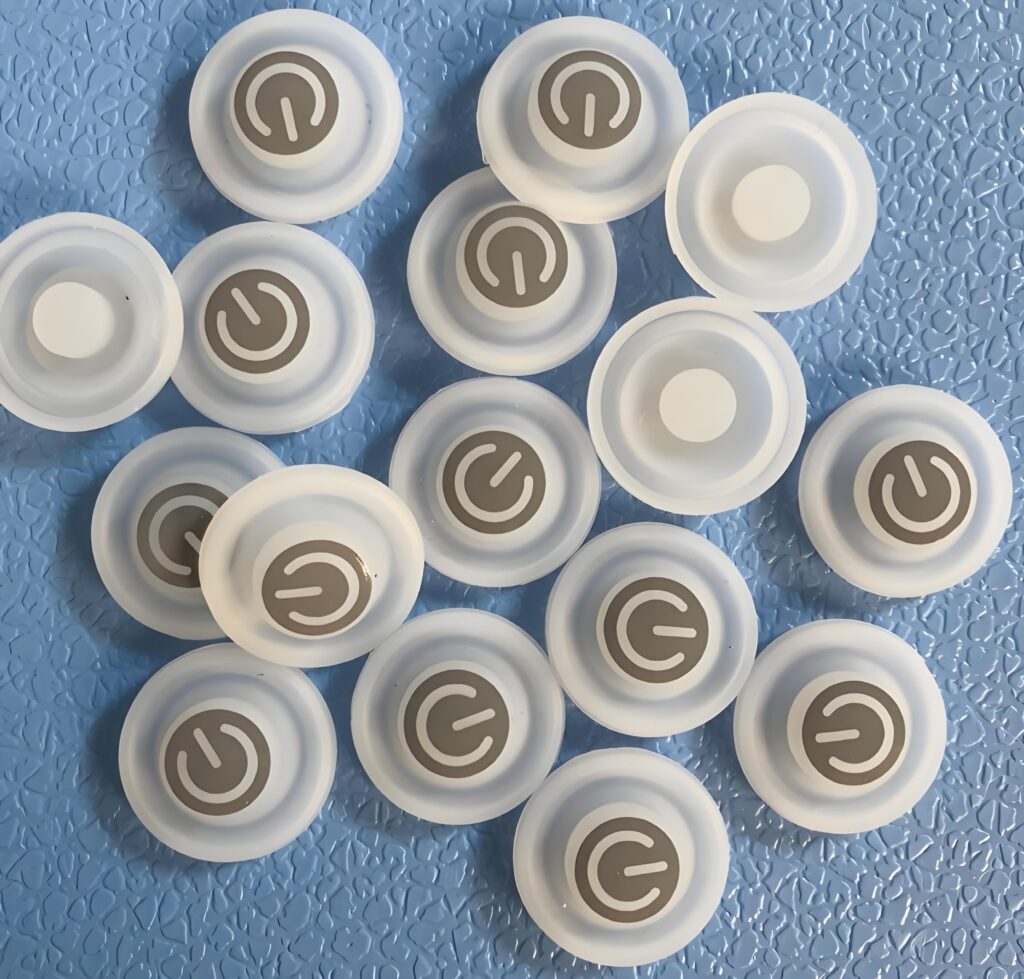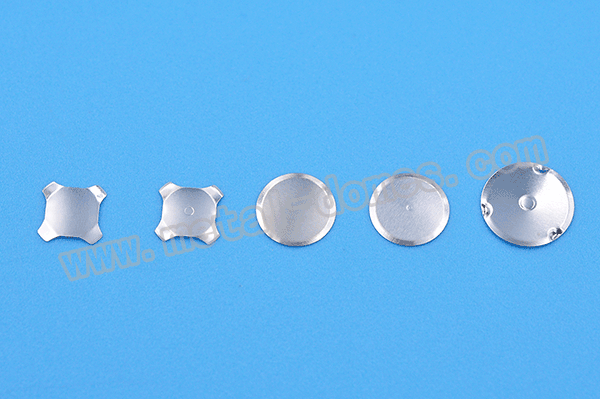Shore hardness is an index used to measure the hardness of materials. The Shore hardness is measured by indenting the surface of the material under a certain pressure with a specific shape of indenter, and then determining the hardness of the material according to the depth of the indentation. The silicone Shore hardness refers specifically to the Shore hardness of silicone materials, which reflects the softness or hardness of silicone.
What is shore hardness?
Shore hardness refers to a test and expression method for material hardness. The test principle is to drop a specified diamond punch from a fixed height on the surface of the sample, and the punch bounces up to a certain height. The ratio of the bounce height to the drop height is used to calculate the Shore hardness.
Shore hardness tester is an instrument for measuring the hardness of rubber, plastic, metal materials, etc. It uses the elastic rebound method to drop the striker from a certain height to the surface of the test material and cause a rebound.
The striker is a small cone with a tip, and the tip is often inlaid with a diamond. The measured height of the striker rebound is used to indicate the hardness. The Shore hardness tester is suitable for determining the Shore hardness value of ferrous and non-ferrous metals, and is also used to determine the hardness of materials such as rubber and plastic.
What is the hardness of silicon?
The hardness range of silicone is very wide, ranging from 10 to 80 degrees. The higher the hardness, the more wear-resistant and pressure-resistant the silicone is, but the elasticity will decrease accordingly; on the contrary, silicone with lower hardness feels soft and comfortable, and has better elasticity.
Application areas of silicone with different hardness:
Low hardness silicone: commonly used in medical equipment and baby products, providing a soft and comfortable touch.
Medium hardness silicone: used for products that require certain protective properties such as protective covers.
High hardness silicone: used for seals and protective parts in the automotive and electronics industries to ensure durability.
What is the hardness of silicon rubber?
The hardness range of silicone rubber is wide, ranging from 10 to 80 Shore hardness. The hardness of silicone rubber mainly depends on its formula and processing conditions, so it cannot be simply said that silicone rubber is soft or hard, but the appropriate hardness should be selected according to specific application requirements.
Relationship between hardness and materials:
Soft silicone rubber: has excellent elasticity and softness, suitable for gaskets, sealing rings and other fields, providing good waterproof, dustproof and shock absorption effects.
Medium hardness silicone rubber: strikes a balance between hardness and softness, suitable for seals, vibration isolators, electronic components and other fields, ensuring good sealing performance and mechanical protection effect.
Hard silicone rubber: has excellent wear resistance and aging resistance, suitable for automotive parts, engineering machinery, molds and other fields, providing durable mechanical support effect.
What shore hardness is silicone?
The Shore hardness range of silicone is usually between 20 and 80 Shore A. The specific value depends on factors such as the composition of silicone, the pressure and shape of the durometer and the test conditions.
The Shore hardness of silicone is one of the important indicators for evaluating its performance, reflecting the material’s ability to resist deformation when under pressure, which directly affects its service life and product performance.
Different application scenarios have different requirements for silicone hardness:
Seals and shock-absorbing materials: Silicone with a hardness between 30 and 50 Shore A is usually selected to provide good elasticity and flexibility.
Wear, pressure and temperature resistant materials: such as shoe soles, conveyor belts, etc., may require silicone with a hardness between 60 and 80 Shore A to ensure better wear, pressure and temperature resistance.
In addition, the hardness of silicone can be adjusted through custom production to meet specific needs. Low hardness silicone is often used in medical devices and baby products to provide a soft and comfortable touch; while high hardness silicone is often used in the automotive and electronics industries to manufacture various seals and protective parts.
What is the hardness grade of silicone?
The hardness grade of silicone ranges from 10 degrees to 80 degrees, with 10 degrees hardness silicone being the softest and 60 degrees hardness silicone being the hardest. The hardness of silicone is usually measured by a Shore durometer, and silicones of different hardness are suitable for different application areas.
The hardness of silicone has a significant impact on its performance. Silicones with higher hardness are wear and pressure resistant, but have lower elasticity; while silicones with lower hardness feel soft and comfortable and have better elasticity.
In addition, liquid silicones usually have lower hardness and are suitable for applications that require softness and fluidity; while solid silicones have higher hardness and are more suitable for making durable finished products.
How to choose silicone hardness?
When choosing silicone hardness, you need to consider the following factors:
Product type and use:
Food-grade silicone: For chocolate, candy, and fondant molds, it is recommended to use mold silicone with a hardness of 10-20, because low-hardness silicone can be demolded better, and the product will not be damaged due to the silicone being too hard. At the same time, low-hardness silicone has better tensile properties, which is conducive to extending the service life of the mold.
Precision casting: It is recommended to choose 40-hardness addition silicone, because its high temperature resistance and shrinkage rate are better than condensation silicone.
Mold making method:
Small products: For products within 30 cm or with very fine patterns, silicone with a lower hardness (15-20 degrees) can be used to open the mold, which is easier to demold and will not damage the fine texture of the product.
Medium products: For products around 50 cm, it is recommended to use 25-30 degrees silicone to open the mold.
Complex products: For three-dimensional products with fine or complex patterns, you can use 20-30 degrees of silicone for brushing operations. By brushing a layer of silicone and a layer of glass fiber cloth, the tensile and tear resistance of the mold can be increased.
Specific range and characteristics of silicone hardness:
0 degree hardness: ultra-soft silicone, with excellent electrical properties and chemical stability, water resistance, ozone resistance, weather aging resistance, and non-corrosiveness.
5-10 degree hardness: suitable for product models with very fine patterns.
20-40 degree hardness: best performance, good tear toughness and elongation, suitable for most industrial and daily necessities.
40-60 degree hardness: high hardness silicone, suitable for the fixation of precision parts or fixtures, with high tear resistance, high temperature resistance, water-washable stone grinding resistance and other characteristics.
In summary, the selection of the appropriate silicone hardness needs to be determined according to the specific application scenario and product requirements.
How do you increase the hardness of silicone shore?
The following methods can be used to increase the hardness of silicone shore:
Heating treatment: At room temperature, the hardness of silicone may be relatively low, and its hardness can be increased by heating it.
Cooling treatment: Put the silicone in a refrigerator or lower the temperature in an air-conditioned room to quickly cool the silicone, which can also increase its hardness.
Adjust the curing time: By adjusting the curing time, the silicone can achieve a higher hardness during the curing process.
Use hardener: Adding an appropriate amount of hardener to liquid silicone can significantly increase the hardness of silicone.
In short, the hardness of silicone shore is an important characteristic indicator of silicone materials, which has an important impact on the performance and use of silicone products. It has applications in many fields, and the demand, process and cost should be considered comprehensively when choosing.












